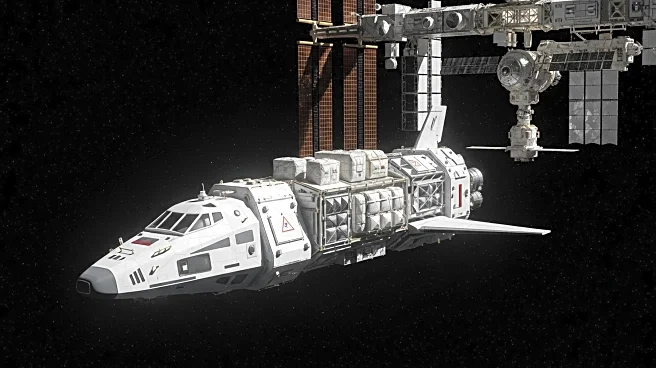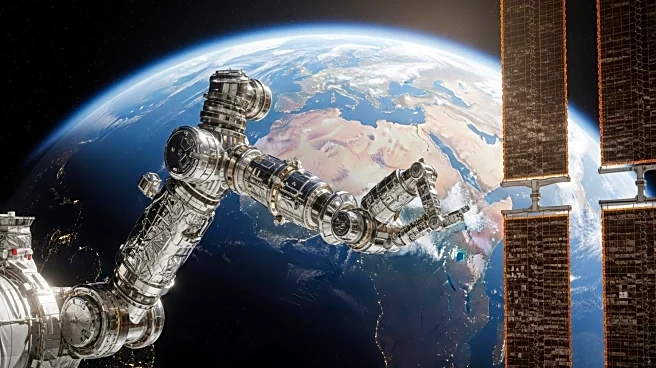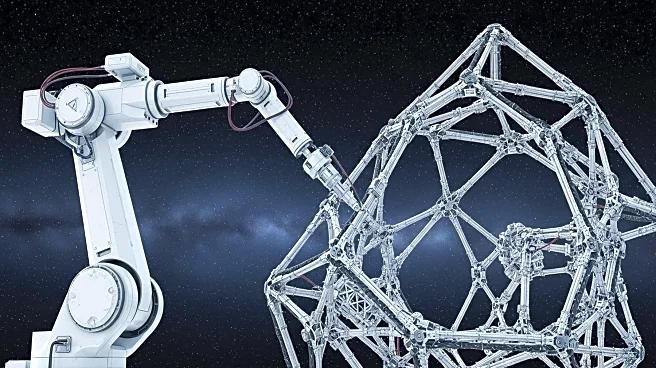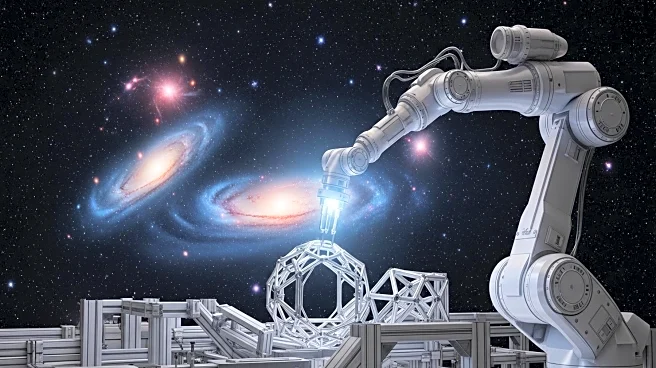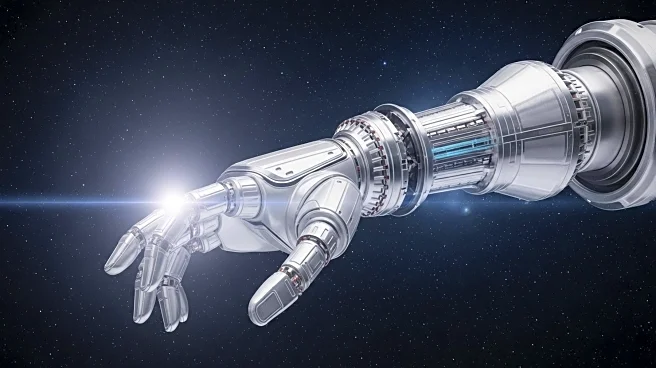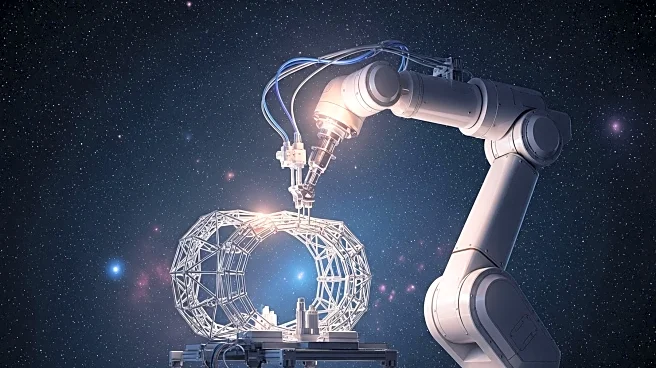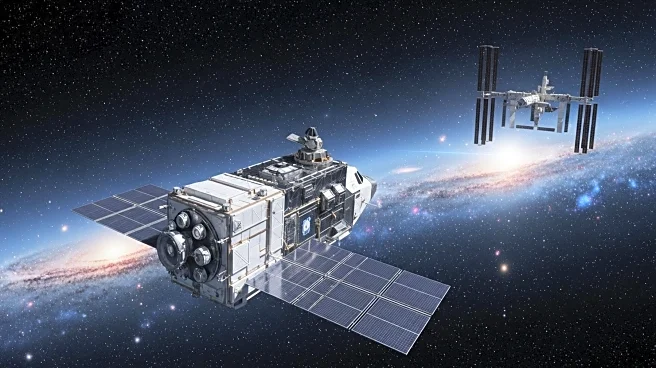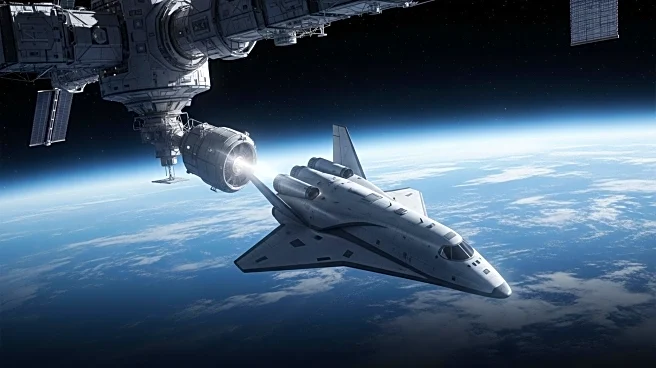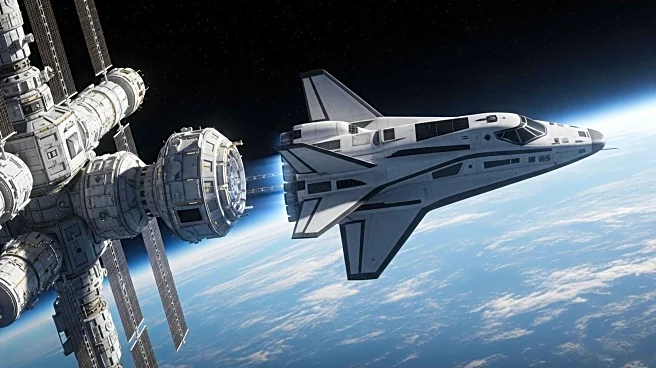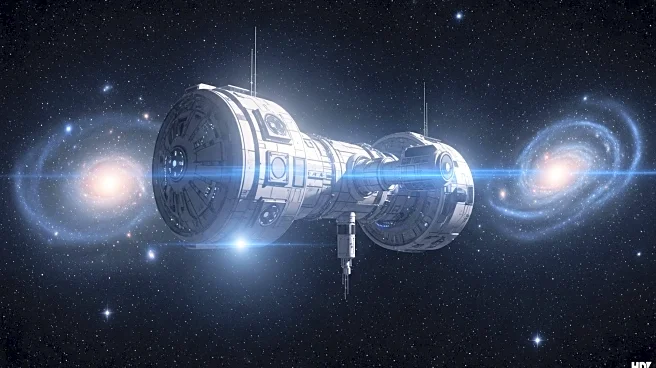What is the story about?
What's Happening?
Rendezvous Robotics, a startup based in Golden, Colorado, has emerged from stealth mode, announcing its plans to send self-assembling tiles to the International Space Station (ISS) next year. The company has already conducted two demonstrations of its technology in orbit. It has raised a $3 million pre-seed funding round led by Aurelia Foundry and 8090 Industries, with participation from ATX Venture Partners, Mana Ventures, and other angel investors. The funding will be used to advance the company's technology from demonstrations to large-scale infrastructure projects in space. The company is co-founded by Ariel Ekblaw, Phil Frank, and Joe Landon, all veterans in the space and technology sectors.
Why It's Important?
The development of self-assembling space infrastructure by Rendezvous Robotics represents a significant advancement in space technology. By removing the limitations of rocket fairing sizes, the company aims to enable the construction of large-scale structures in space, such as antennas, orbital solar farms, and data centers. This technology could revolutionize how infrastructure is built and maintained in space, potentially reducing costs and increasing efficiency. The involvement of industry veterans and substantial funding indicates strong confidence in the company's vision and capabilities.
What's Next?
Rendezvous Robotics plans to launch its fifth-generation technology to the ISS early next year, marking its third demonstration in orbit. This step is crucial for validating the technology's capabilities and scalability. Success in these demonstrations could lead to further investment and partnerships, accelerating the development of space infrastructure projects. The company’s progress will be closely watched by stakeholders in the aerospace industry, as it could pave the way for new opportunities in space exploration and commercialization.
Beyond the Headlines
The self-assembling technology developed by Rendezvous Robotics could have broader implications beyond space infrastructure. It may influence the design and construction of modular systems on Earth, offering new solutions for industries requiring adaptable and scalable structures. Additionally, the technology's potential applications in defense and energy sectors highlight its versatility and strategic importance.
AI Generated Content
Do you find this article useful?


